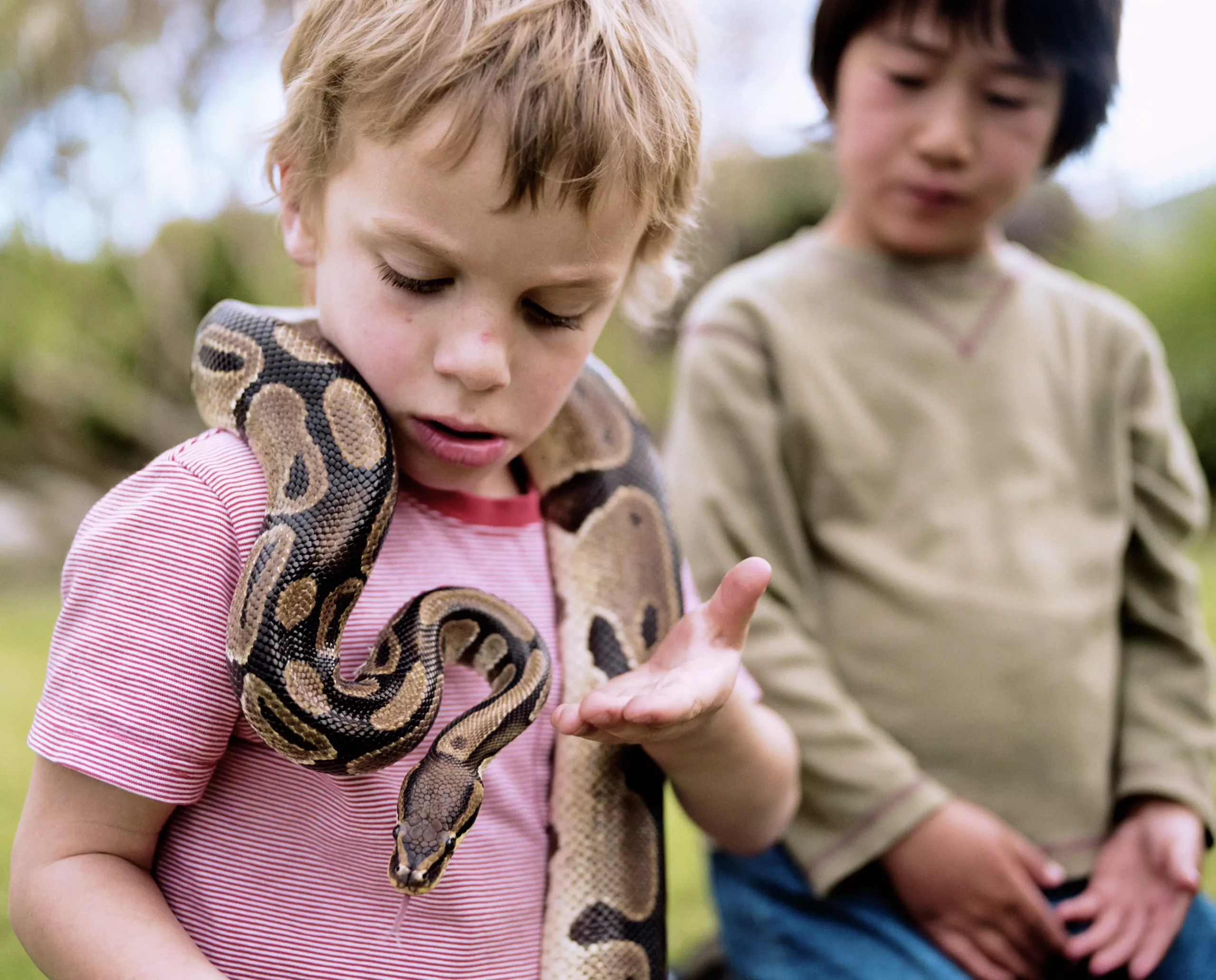For those venturing into the captivating world of reptiles, the ball python, scientifically known as *Python regius*, stands out as an excellent choice for novice owners. Renowned for their manageable size, gentle disposition, and intriguing behaviors, these snakes offer a rewarding experience for new herpetologists. This article delves into the care, maintenance, and unique characteristics of ball pythons, emphasizing why they are a preferred species among beginners.
Ball pythons typically reach an adult length of 4 to 5 feet. This relatively modest size, compared to other constricting snake species, makes them more manageable for beginners. One of their most fascinating behavioral traits is their instinct to curl up into a tight ball when they feel threatened, concealing their head amongst their coils. This natural defense mechanism is how they earned the name “ball python.” Juvenile ball pythons grow about a foot annually during their first three years, potentially reaching a long lifespan of 20 to 30 years, and in some exceptional cases, even longer with the right care.
It is essential to choose a captive-bred ball python, as wild-caught counterparts often suffer from stress and may carry a heavy parasite burden from their time in the wild. Captive-bred snakes, while often pricier, are typically healthier, hardier, and more suitable for new owners.
When it comes to housing these snakes, it’s crucial to provide an environment that meets their specific needs. An enclosure size of 20 gallons is generally adequate for younger pythons, while adults may thrive better in a 30-gallon tank or larger. Ball pythons are adept escape artists, so ensuring a secure fitting on the tank is of utmost importance.
The choice of substrate—such as shredded bark, newsprint, or Astroturf—can influence cleanliness and maintenance. Astroturf, in particular, is user-friendly since dirty sections can be easily swapped out and cleaned. To create a comfortable environment, include sturdy branches for climbing and provide hiding spaces that allow the snake to feel secure.
Temperature regulation within the enclosure is also critical. The cool end of the tank should maintain temperatures between 75 to 80 degrees Fahrenheit, while a basking area needs to reach between 88 and 92 degrees. This thermal gradient allows the ball python to regulate its body temperature effectively. Thermometers should be employed at both the warm and cool ends of the enclosure to monitor temperatures accurately.
Feeding a ball python is quite straightforward, as these snakes thrive on a diet primarily consisting of mice and small to medium-sized rats. Juvenile pythons typically require feeding every five to seven days, while adult snakes can go up to two weeks between meals. It’s advisable to provide pre-killed prey to prevent potential injuries. For added engagement, presenting the prey on forceps can stimulate the snake’s hunting instincts.
One effective feeding strategy involves moving the snake to a separate enclosure during feeding time. This approach not only helps the snake associate the feeding process with the new environment but also reduces the risk of confusing a handler’s hand for potential prey. It can facilitate taming and make the handling process smoother.
A key aspect of ball python care is monitoring their health. It is not uncommon for ball pythons to exhibit periods of fasting, especially if they are adjusting to a new home or are experiencing stress. As long as they maintain a healthy weight, intermittent fasting is not usually a cause for alarm. However, it is essential to regularly assess the snake’s environment, handling, and stress levels, as these factors can impact their feeding behavior.
In cases of prolonged fasting or significant weight loss (over 10%), consulting with a veterinarian or experienced keeper becomes crucial. To encourage a hesitant snake to eat, strategies such as introducing chicken broth-soaked prey or experimenting with different colors of mice can sometimes yield positive results.
When selecting a ball python, look for a young, well-maintained captive-bred specimen. It’s essential to ensure the snake appears healthy, with no signs of respiratory issues and clean physical features. A curious demeanor and a gentle grip during handling can be indicators of a snake that is both healthy and will adapt well to a new home.
Ball pythons are an ideal choice for new snake owners, thanks to their gentle nature and manageable care requirements. With the right environment, diet, and attention, they can thrive and become a beloved part of their owner’s life for decades to come.

